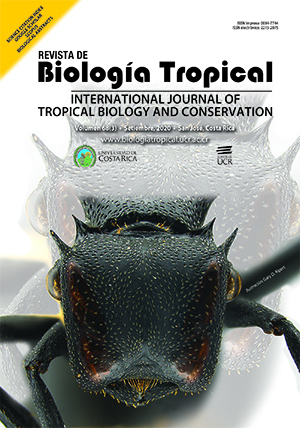Abstract
Introduction: In Neotropical forests with high seasonality, climatic variables generally exert a strong influence on plant phenology. Objetive: To describe the reproductive phenology of eight tree species in a fragmented forest landscape, as well as to evaluate the seasonality and their phenological synchrony. Methods: The observations were performed over two years on the foothills of Los Farallones de Cali National Park, in southwestern Colombia. We applied circular statistics to detect seasonal trends, calculate intraspecific synchrony and identify correlations between phenophases and climatic variables. Results: Flowering and fruiting were significantly seasonal in most species. The flowering and fruiting patterns were annual (e.g. Henriettea seemannii, Ocotea aurantiodora, Schefflera morototoni, Lacistema aggregatum) or sub-annual (e.g. Eugenia cf. egensis, Erythroxylum citrifolium, Miconia minutiflora, M. rubiginosa). The open flower and mature fruit phenophases at the community level were continual and bimodal. Each species had high intraspecific population synchrony of open flowers and ripe fruits. Precipitation, relative humidity, temperature and solar irradiance were correlated to flowering and fruiting peaks, except in E. cf. egensis. Conclusions: The annual species showed high phenological synchrony, although the rainfall regime showed variations between years; thus, they seem to be less sensitive to climatic variation than the sub-annual species. Our results indicate that climatic variables partially control the flowering and fruiting rhythms of the eight tree species in this study.
##plugins.facebook.comentarios##

This work is licensed under a Creative Commons Attribution 4.0 International License.
Copyright (c) 2020 German Augusto Corredor


